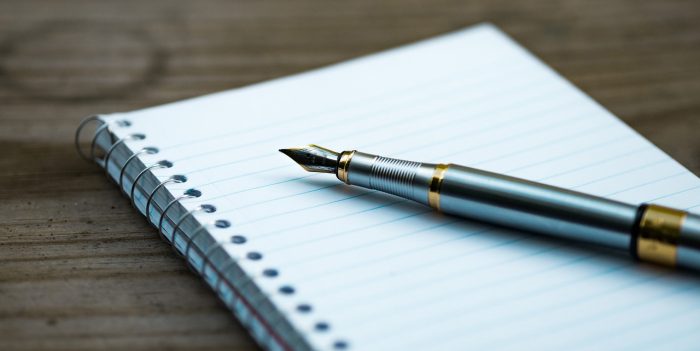When I saw the first writing submission call for writing a drabble story, I was curious at just what that meant. When I found out that a drabble had to be exactly 100 words I thought, I can do that, it sounds super easy. I studied the requirements and an hour later I had written a 300 plus word story.
Writing a 100-word story turned out to be much more challenging than I first suspected. Hitting that amount of words isn’t the problem, the problem is finding a way to tell a complete story in that exact amount of words. To write a publishable drabble for a submission call the story must contain a beginning, middle, and end.
After much practice, I sold my first 100-word story to Martian magazine. A dozen anthology and magazine publication acceptances later, along with plenty of rejections, I felt I had finally found some publishing success in the medium. If you enjoy writing in the speculative fiction arena (fantasy, science-fiction, horror) there are a number of drabble submission call markets out there. Black Hare Press offers a themed monthly drabble challenge called Dark Moments (https://www.blackharepress.com/submissions/) and it is a great way to get your feet wet in drabble writing. You don’t have to pay to submit and if your story is one of the twelve accepted for the month you get a contract that delivers an online feature, print publication in the end of year anthology, and four dollars!
My best lessons learned in drabble writing:
• Determine the core idea for your story. A drabble needs to follow a single plot line in order to progress all the way through the beginning, middle, and end sequence.
• In the first draft keep the word count under 150 words. That’s an excess of up to 50 words to cut, but I can read to revise and pare my word count down to the necessary 100 words to get to the core of the story. I can cut anything that doesn’t move the story along.
• Word choice is essential to telling a good 100-word story. One strong verb can deliver loads of detail and replace three or four words of description. In a drabble every word counts, quite literally. It may feel like a little bit of a cheat, but contractions are a great two for one deal. Writing drabbles has made a profound improvement in vocabulary choice even in my larger stories.
• The story will need some type of action to deliver to the reader to have an impact. Something needs to happen in those 100 words because you need to have experienced some character change from start to finish.
• The story premise, or beginning sequence, needs to be established quickly with an economy of words but that still hooks your reader. The middle sequence, for me, establishes the heart of my story. The middle is where I deliver the struggle or consequence the characters are up against. The end sequence needs to have a punch. It must wow the reader. The temptation is sometimes to leave the reader with a cliffhanger ending, but if you choose to do that, you must give the reader enough in the direction of the story to feel like they know definitively how it all ends. I loosely follow a 25 word beginning, 50 word middle, 25 word ending formula.
Not every idea is going to work in 100 words. I have a few stories that started as a drabble attempt only for them to take on a life of their own and end up as a 2000 word story that I sold as flash fiction.
I have stories published with counts of over 4000 words, but some of the most challenging and rewarding stories I have written come in at just exactly 100 words. Learning to write drabbles, along with being part of an amazing writing group (I’m looking at you WCCWers), has been instrumental in improving my skills as a writer. They have made me better at the craft.
Here are a couple of published examples of my drabbles:
Wrong One
The straps cinch my arms and legs to the operating table. I struggle against them yelling at the team gathered around me, “You have the wrong one of us!”
The corporation lawyer steps forward and reads from a script, “Due to insufficient payment by Martin E. Taylor, his Identi-Clone is hereby remanded back to custody of Hospex Industries where it shall be sold for bids on the organ market.”
In the back of the room I see a surgical mask come down and the smile set on the face of my clone as the repo surgeon makes his first incision.
(First published in Dark Stars: Science-Fiction Horror Drabbles and later sold as a reprint to Martian magazine issue #10)
![]()
Life Vine
Dokter Reese Parr, as the head Astrobotanist with the Genesis Project, knew results were expected of him. His team landed on the moon of Korvas two cycles past, ransacking the lunar landscape for botanical discoveries to enhance the financial coffers for the Project’s Board of Directors, collecting over five hundred new flora samples to be tested.
The dokter’s intellect was only rivaled by his arrogance, believing man the dominant life form in the galaxy. Korvas wasn’t impressed with the dokter’s accolades, it would recover what was taken from it. Sentient vines snaked along the ground seeking and seizing their prey.
(First published as online feature with Trembling With Fear (11/20/22) and later collected in the Trembling With Fear Year 6 anthology)
- Writing a Drabble - October 30, 2023
- Writing Tools - July 17, 2023
- Seven Questions with Eli Cranor - April 17, 2023


Great job! I like them both, but the first one would be my nightmare.